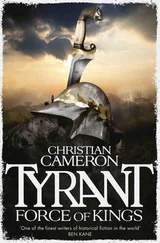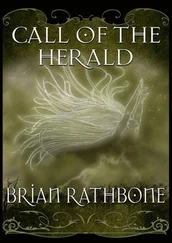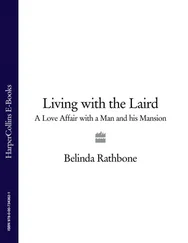'Hang on a minute, why does he say that? Why does he say "Owing to circumstances beyond our control"?'
'He could not admit he was in pursuit of his beloved crossbows.'
'Why not?'
'We've been into this. The Emperor has a Buddhist monk whom he consults on all spiritual matters. As a result he does not approve of Harihara's hobby. He expects his relations to follow his example…'
… where we witnessed the horror of a full battle between large armies. In order that we may learn as much as we can from this experience it is my intent to record here a full account of this terrible affair.
Both hosts were huge. The Queen's army numbered perhaps fifty thousand and was led by the Duke of Suffolk, though many great magnates and lords had also brought their powers. Men had been recruited from right across the north of England. King Edward's force was smaller, perhaps forty thousand men. In all, this equals about one in fifty of the entire population. Both sides had cavalry in large numbers, men-at-arms and archers. King Edward's also had a small contingent of crossbowmen, some of whose weapons were of the highest order. And both sides fielded cannon and men with handguns called ribaudkins.
The Queen's army was based in York, the largest city in the north of the country, where she remained with her evil son and mad husband. King Edward advanced up the road from London. Some twenty-four miles or so south of York the London road has to cross a small but militarily important river called the Aire at a settlement called Ferrybridge. The bridge was destroyed by a large force led by Lord Clifford, whose father had been killed by Edward's father, and who had himself killed Edward's brother after the battle of Wakefield.
The Yorkists attempted to build a floating bridge but were attacked by the Queen's men. There was fierce fighting and Edward showed his generalship to good effect. Remember, he was only eighteen, the age of Alexander when he won his first victories. He poured reinforcements into the battle for the bridge when a less determined commander might have given up, and sent a flanking wing to the west to the next crossing upriver at a place called Castleford. Faced with this threat Clifford withdraw into a marsh. The fighting here was fierce. Exhausted, Clifford briefly removed the lower part of his helmet for greater ease and comfort and was struck by an arrow. He died later in great agony, which pleased King Edward.
This all happened on the twenty-eighth day of March in terrible snowstorms and bitter cold.
The Queen's advance guard now fell back and met up with the main army, which had reached Tadcaster, some ten miles south-west of York. A mile or so south of Tadcaster they took up a defensive position. Near the village of Towton the Tadcaster-Ferrybridge road winds along higher ground but keeps a more or less constant north-south direction. To the west of it the land drops in a horseshoe declivity to a meadow, several hundred paces wide, and on the west side to the winding river known as Cock Beck. The banks of the beck ('beck' means narrow river) are wooded, quite deeply in places. The more southerly of these woods fills an ox-bow of the river and is called Castle Hill Wood; the more northerly, where the valley narrows and its sides become steeper, Renshaw Wood.
These woods played an important part in the battle. Somerset hid several thousand men in Castle Hill Wood from which they emerged to attack the Yorkist left flank and rear at a crucial time, nearly winning the battle for the Queen. Renshaw Wood, and the ravine it filled, initially protected his left and rear, but eventually became a trap where thousands were slaughtered.
Dear cousin, do not imagine there is anything grand in the landscape I have described. The hills are low, at most a hundred feet above the plain, and, except down to Renshaw Wood, not steep; they are turfed, support sheep; there are no outcrops of rock; the trees are small, rarely more than forty feet high and mostly as little as fifteen or twenty but with thickets of thorny brambles on their edges.
Edward could possibly have joined battle on that late afternoon, but five thousand of his men, under the ailing Duke of Norfolk, were a day's march away and he decided to wait through the night.
This brought us to the day the Christians call Palm Sunday, which commemorates Jesus's triumphal entry into Jerusalem five days before he was crucified. This year it fell on the twenty-ninth of March. Usually, I am told, one can expect reasonably clement weather by this time of year, a week past the equinox, with small yellow trumpet-shaped flowers blooming in fields and hedgerows, and some trees beginning to green up. There was little sign of that this year, and although the grass was green and lush, it was bitterly cold with a severe snowstorm blowing in from the south-east through most of the day.
The armies were positioned just within lethal arrow-shot of each other, that is, about two hundred and fifty paces. Shortly after daylight was established, but with driving snow and poor visibility, Lord Fauconberg on King Edward's left, facing north, ordered his archers forward and commanded them to let loose one flight of arrows. I have already described to you the power and deadliness of these missiles. At a distance curved, well-visored helmets and breastplates will turn them, but chain-mail or unvisored helmets are no protection. At close quarters they will pierce steel plate. On this occasion, this one flight of perhaps five thousand arrows caused the Queen's archers great distress, and they loosed off salvo after salvo in return, shooting at will, until their quivers were almost empty.
However, because of the driving snow, their arrows fell short by forty yards and because they were blinded by the snow they could not see that this was so. Lord Fauconberg now ordered his archers forward and at ever closer quarters they loosed off their arrows into the Queen's army, replenishing their stock from the arrows of their enemies, which strewed the grass. Lord Northumberland, commanding for the Queen in that area, now ordered his men-at-arms to attack rather than remain at the mercy of this hail of arrows. Fauconberg's archers fell back through the ranks of the men-at-arms, and hand-to-hand fighting was now joined.
In spite of the initial success of Lord Fauconberg's archers the Queen's army, by sheer weight of numbers, began to get the better of what was essentially an even battle. It was extremely savage. Both sides had sworn to kill all nobles and gentlemen they might take – this had already become common practice. But Edward had also issued an order that no commoners who surrendered or fell wounded should be spared either. There was a sense that these wars had gone on long enough and should be ended on that day.
Men fought until they fell wounded. Or merely fell. This was the common fate of every loser in what was basically a series of single or almost single combats, one against one, two against one, two against two: the combinations constantly-shifted and gave the impression that at the point of contact a large body of men fought a large body of men. But essentially they were single combats. This gave the advantage to the side that could field die most men who were fit, had good anus and armour, who believed in the profit they would gain by winning, who had the requisite skills to a high degree. Now these wars had been going on for some years and themselves followed a hundred years of fighting against the French. Both armies therefore had a large nucleus of professional, trained combatants who, over a series of engagements, had put together the arms they used most effectively and the armour that fitted them.
They were encased in armour from head to foot, from rounded, visored helmets to steel-plated boots. Many did not carry shields for a shield is cumbersome, leaves one side unprotected, and occupies a hand that might otherwise join its brother to wield a sword five feet long and a foot wide.it the quills, or a double-headed axe, or a mace with spikes or chain and ball, or a pike with blade, point and hook.
Читать дальше












